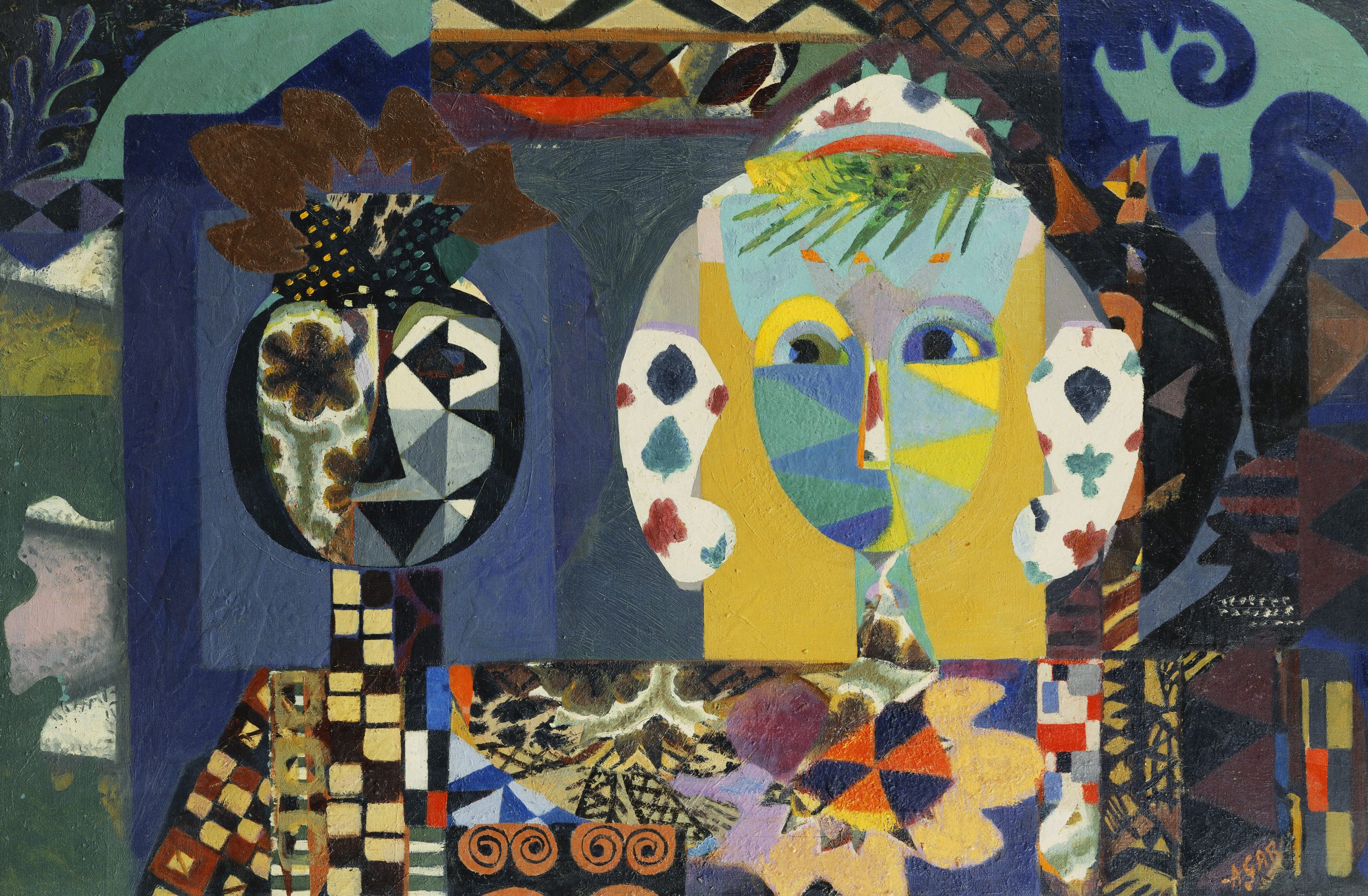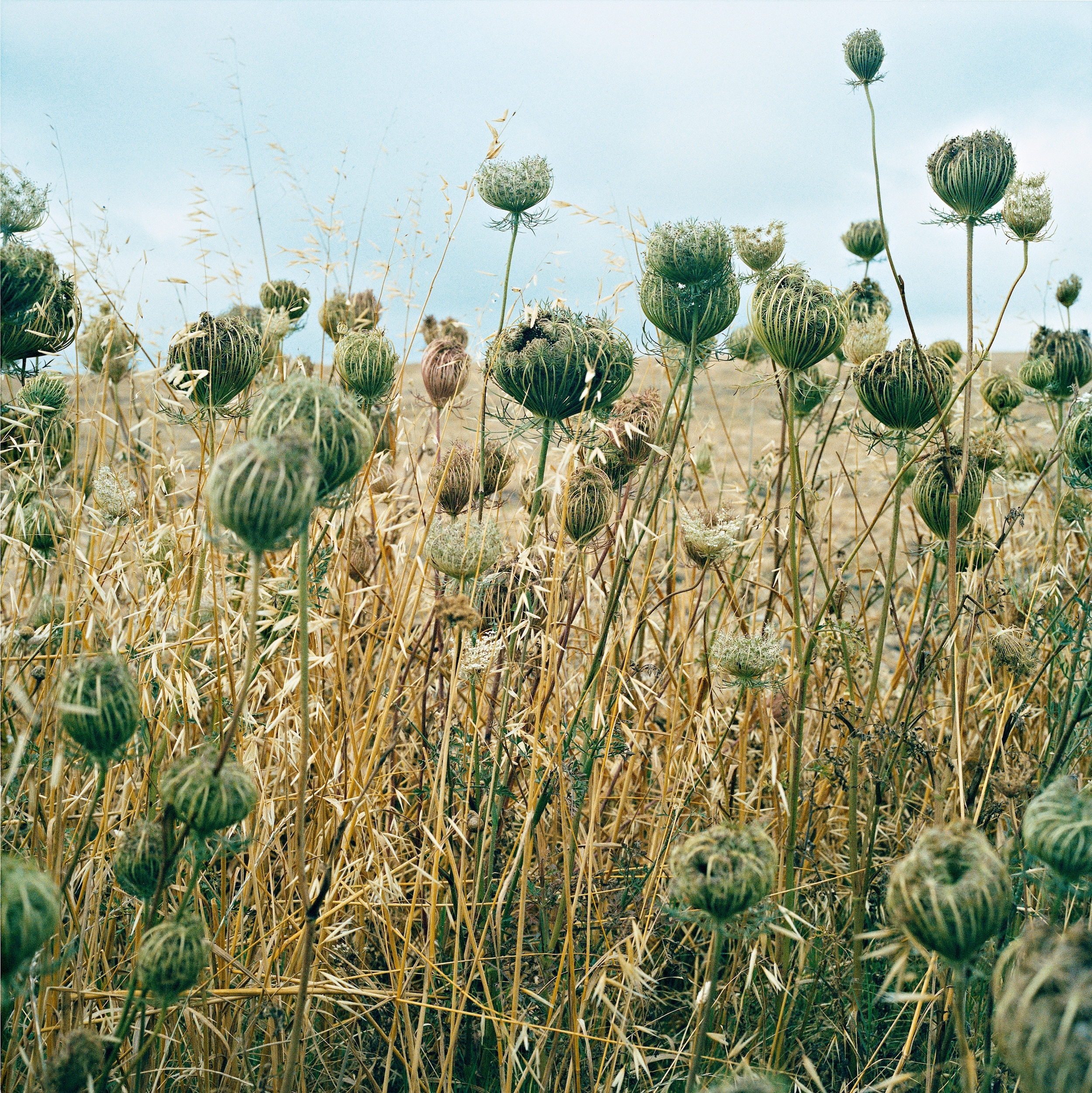Published:
It’s officially summer and what a surreal one it’s been so far! In celebration of our current exhibitions, we’re sharing colourful works of art across the streets of East London. Keep your eyes out over the next few weeks for images of Eileen Agar‘s genre-bending canvases or the lush, other-worldly landscapes of Yto Barrada.
If you encounter one of our posters outdoors, please snap a photo and tag us using #surrealsummer2021 on social media.

From her youth, artist Eileen Agar had acknowledged a tradition of a kind of proto-Surrealism in the UK which she saw as ‘a nation predisposed to the expression of dream states and the unconscious mind.’ She cited the work of William Blake, Jonathan Swift and Lewis Carroll as precursors to the development of Surrealism in Europe and even described Carroll as ‘a prophet of Surrealism’. The figure of Carroll’s Alice was important to her and she depicts her here as larger than her creator, crowned with leaves and playing-card suits, surrounded by clouds and flourishes of flowers, swirls, checks and zigzags in a richly-layered Surreal landscape: ‘Alice is untouchable and eternal, with a mammalian brain and a deep sense of the wonderful world we live in.’

Amidst her 70-year career, Agar experimented with just about every medium: painting, photography, collage, sculpture, frottage… However a new painterly discovery took place 1965 when she was introduced to acrylics, which she found to be ‘very versatile; it can be used as impasto, with a palette knife, or a thin wash gives wonderful glazes’.
One of Agar’s largest late paintings, Aztec Dream, demonstrates the artist’s skill and dexterity with acrylic. Within the tight but harmonious composition, passages of light translucencies meet blocks of opaque reds, blues and browns, as well as geometric stripes, spots and zigzags. The central figure and its surrounding shapes draw inspiration from the ancient Aztec glyphs found in the photographic slides and diagrams which Agar collected throughout her life, many of which are held in the Tate Archives to this day.

For Whitechapel Gallery’s second public presentation of works from the Hiscox Collection, artist Sol Calero has created a world entirely of her own, one that celebrates both the natural and the domestic realms. The exhibition features works by over 40 artists, among them this piece by Yto Barrada. Titled The Snail (2009/2011), the work examines the relationship between unchecked urban development, the botanical landscape of Tangier and the subtle forms of resistance against the forces of monoculture.
Barrada’s work is among that of dozens of other artists in Calero’s display Desde el Salón (From the Living Room), all borrowed from the Hiscox Collection. This is the first time that the works are being displayed in public, which are normally housed throughout the Hiscox offices in conference rooms, above water coolers and in stairwells.